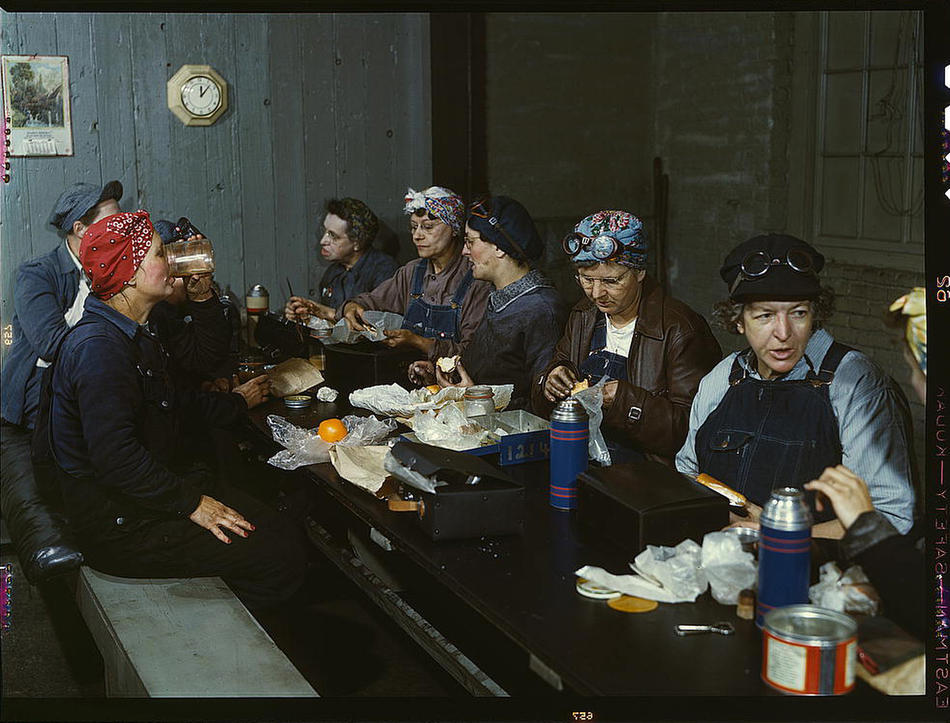
Women workers employed as wipers in the roundhouse having lunch in their rest room, Chicago and Northwest Railway Company. Clinton, Iowa, April 1943. Reproduction from color slide. Photo by Jack Delano. Prints and Photographs Division, Library of Congress
Back in 2006, the Library of Congress organized an exhibition titled Bound for Glory: America in Color that showcased little-known color images taken by photographers of the Farm Security Administration/Office of War Information (FSA/OWI).
Made from color transparencies taken between 1939 and 1943, these images change the way we see the past. I mean, there’s just so much more color. As silly as that seems to say, it makes these photos intimate and relate-able in a way that I haven’t felt before. The black and white images of this era neutralize the bright colors and patterns in the clothing, signs, and wallpaper. It makes it seem like this time wasn’t so long ago.
The photographs depict the effects of the Depression on America’s rural and small town populations, the beginning of the nation’s subsequent economic recovery and industrial growth, and the country’s great mobilization for World War II.
According to Wikipedia, these slides would have been some of the first of their time, as the chronology of the development of color transparencies look like this:
- 1936: Agfacolor (transparency film)
- 1940: Ektachrome (slide film)
- 1942: Kodacolor (color negative process for still photography and later motion pictures)
YOU CAN VIEW THE PHOTOS EASILY HERE
OR HERE (NOT AS EASILY)
there is a book of these images too.














